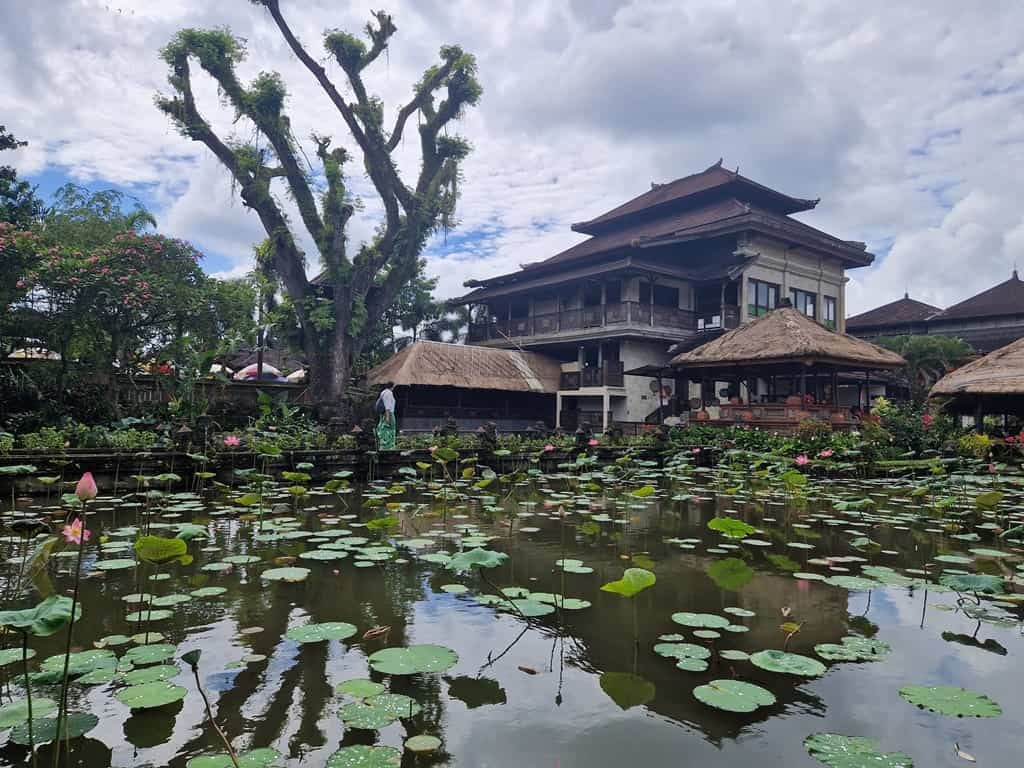Bali is home to some stunning religions, none more so than its collection of water temples. These aquatic places of worship play host not only to beautifully unique architecture but also to natural locations and plenty of water to tie it all together. Think reflections of pagodas in still pools, lily ponds, and trickling fountains.
But the water temples also provide an important link to the island’s agriculture, spirituality, and, of course, the environment itself. This is a guide to water temples in Bali, their significance in Balinese culture, and where to find some of the most famous, and more off-the-beaten-track, examples across the island.
Disclaimer: This post contains affiliate links. This means that should you click on certain links and then subsequently purchase a product, I will receive a small commission.
Table of Contents
A Guide to Water Temples in Bali
What is a Balinese water temple?
Like all temples (pura), in Bali, water temples (pura titra) are an integral part of not only the religious but also the cultural landscape of the island. Water temples provide important places of worship for the people of Bali. They often have links to the rural landscape and agriculture and are mostly centered around springs and other bodies of water.
Water temples aren’t solely Hindu. In fact, they have been inspired over a millennium of ancient beliefs, drawing not only from Saivasiddhanta and Samkhyā Hinduism but also from Austronesian philosophies and even Vajrayana Buddhism.
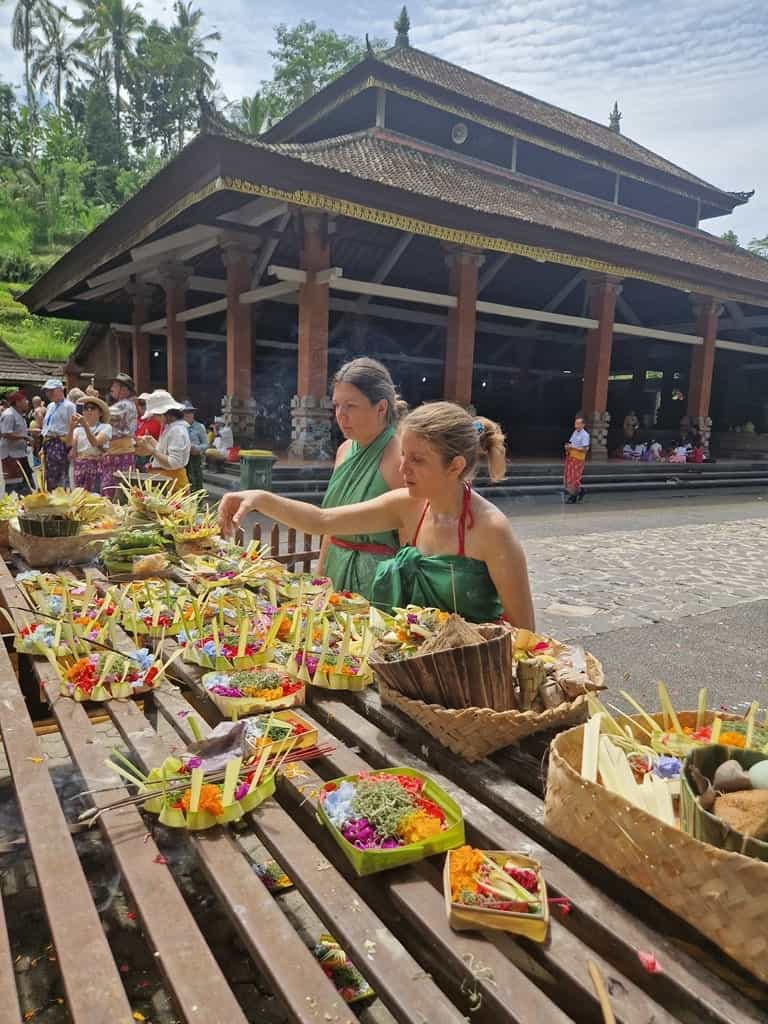
Each water temple serves a purpose on the island. Some of them are where people go to bathe in petirtaan (pools) and perform acts of purification; others are where farmers come to source sacred water to help with growing crops. This second purpose of water management is a big part of the unique subak system of irrigation.
Subak system
Subak is essentially a water management system, and although partly scientific and based on civil engineering, it is also deeply entwined with rituals and festivals in the Balinese calendar. It’s such a unique part of Bali that it has even been inscribed by UNESCO as part of its world heritage, along with a number of water temples.
Subak began to develop in the 9th century, starting out simply as a way to control and allocate water supplies for the island’s crops. The system uses not only waterways like canals and rivers, but also the land — in the form of terraced rice fields, paddies, and forests — alongside the water temples that help to protect water sources and their passage to the fields.
This practice of irrigation has shaped the Balinese landscape over its history. The water from natural springs flows through the grounds of the temples, and out into verdant rice fields.
It’s a cooperative system that brings together the landscape, human intervention, and spiritual beliefs — a concept referred to as “Tri Hita Karana”. The system has enabled the people of Bali to flourish as rice farmers throughout the century and has helped the island overcome challenges such as its dense population.
Rice is believed to be a gift from the gods. That means that the water temples are an intrinsic part of the subak system, helping to manage the ecology of the island and bringing together the various elements of the Balinese belief system.
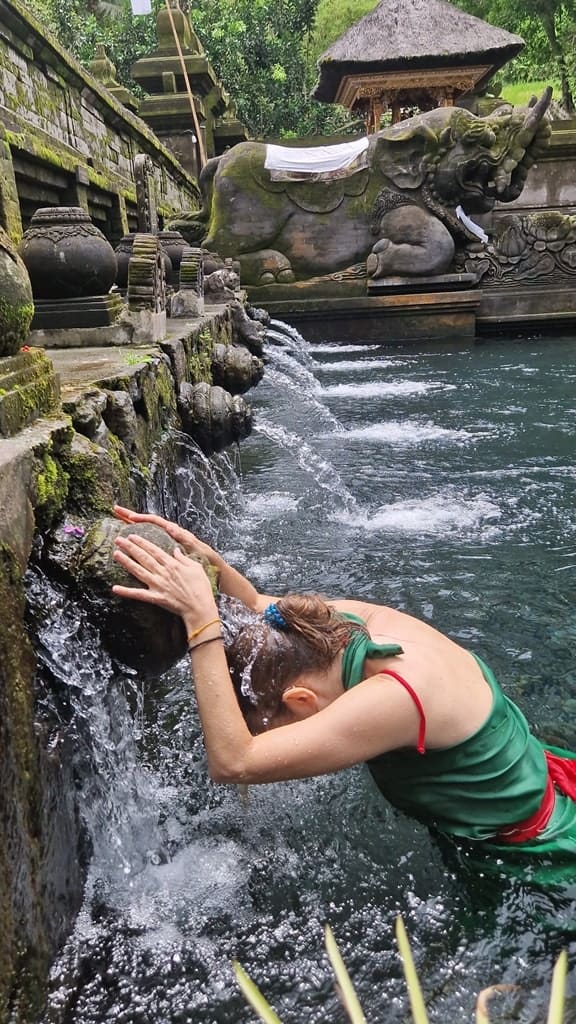
Water temples are where rituals take place, providing an environment for the local communities to pull together and actively take part in the management of the natural world as a collective. Bali boasts around 1,200 water collectives, with any given water source supplying between 40 and 500 farmers with the necessary irrigation for their land.
The system still functions today much as it did over a thousand years ago, and helps farmers grow their crops without the use of fertilizers or pesticides. Sites such as the Pura Ulun Danu Beratan are integral for the blessing of the water which feeds the landscape, as it’s believed to be the origin of every spring or body of water on the island.
The joining of the harmonious ideals that bring together the spirit world, the human world, and nature, at the temple are manifested by the communities and the subak system they work towards.
Water Temples to Visit in Bali
Pura Tirta Sudamala
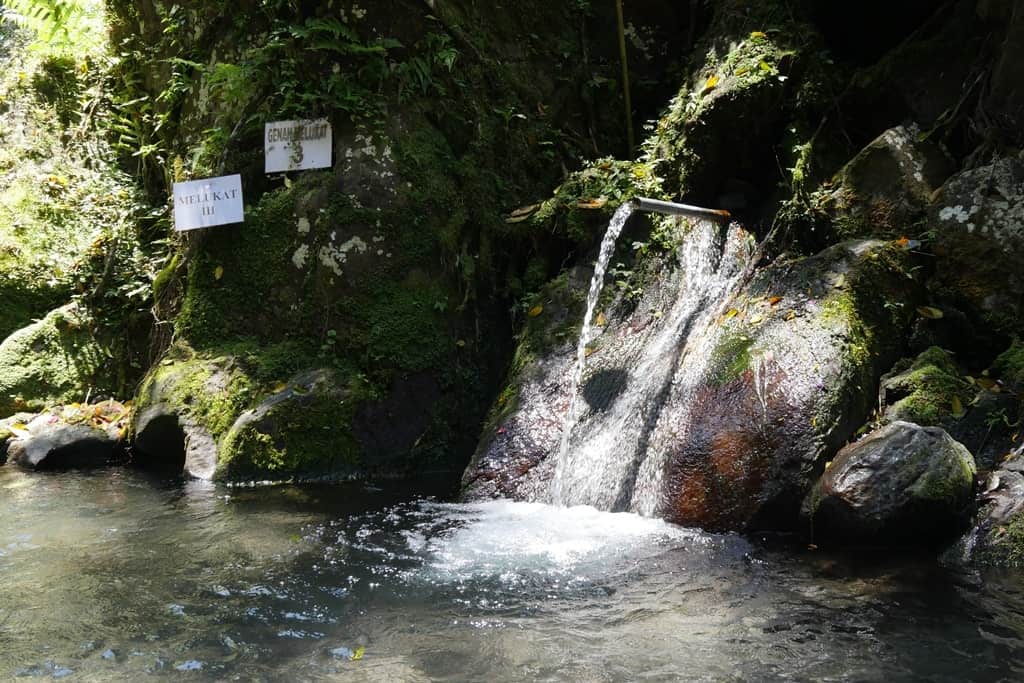
Located in the village of Bebalang, this water temple occupies an upstream area of a small waterway. To get there, it’s about a 20-minute walk along the river from the nearest parking spot.
When you arrive at Pura Tirta Sudamala, you’ll be greeted by 11 spouts of water, which come directly from a spring. These jets stream into a petirtaan, where Balinese worshippers engage in melukat — ritual cleansing in order to rid themselves of any pollution or negative energy. Visitors to this temple can also join in, taking a shower underneath the holy water.
Surrounded by lush forests, it’s a very local place, with hardly any tourists around. You can rent a locker and a sarong for 20,000 RP, plus there are also changing rooms and toilet facilities in the temple complex. Start by washing in the river before entering into the petirtaan for purification.
Pura Tirta Empul
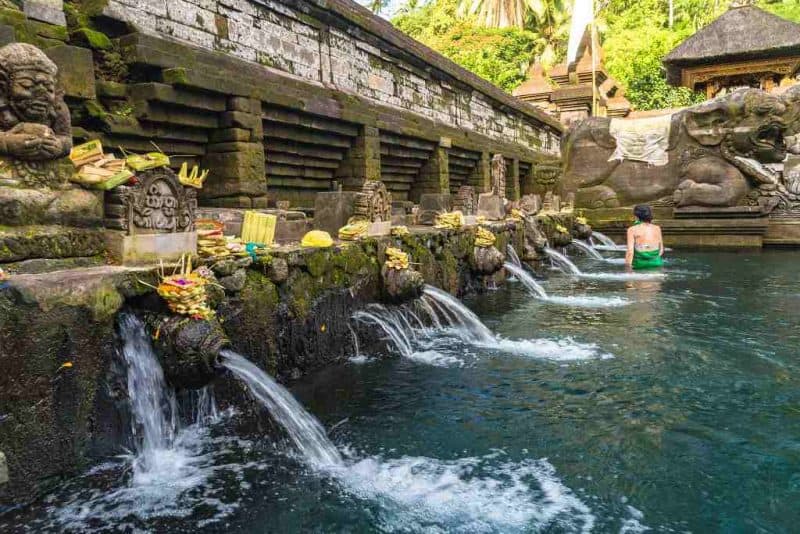
Pura Tirta Empul was founded in 962 AD and is one of the most important water temples in Bali. The spring at this temple plays a key role in the subak system and is also a source of the Pakerisan River.
The temple complex at Tirta Empul is steeped in myth and is said to be the result of an epic battle between a local king and a Hindu god. Here visitors come to bathe in its sacred pools; there are three in total, but only one is appropriate for outside visitors to bathe in. The other pools here are used for funerary rites and religious purification.
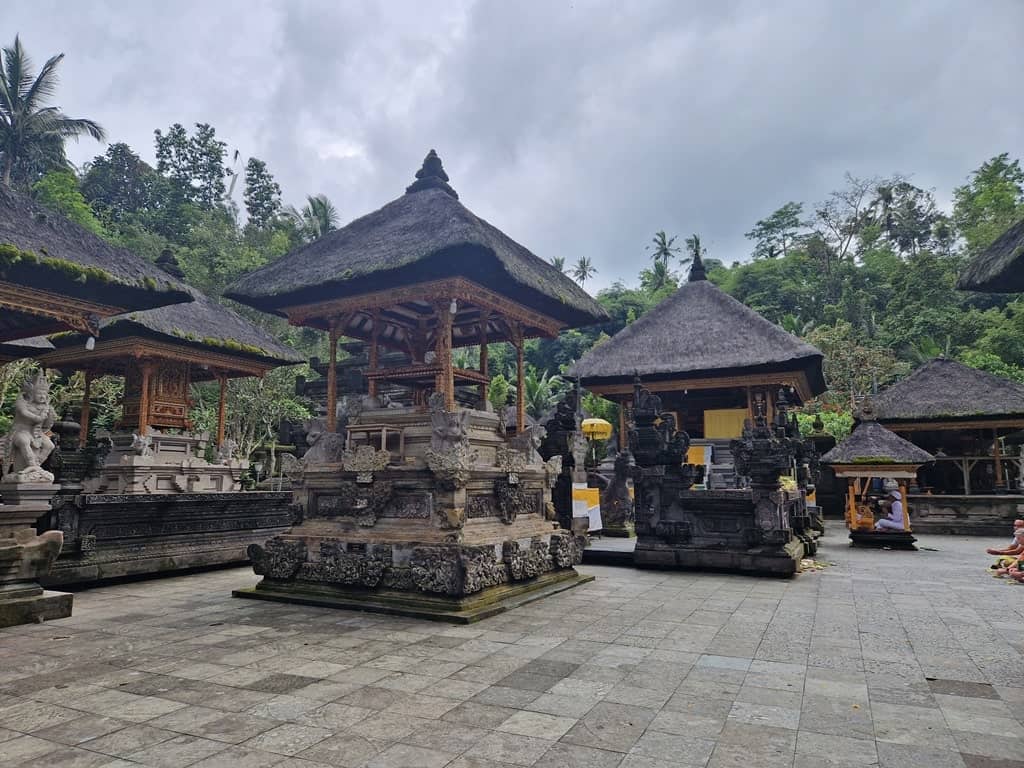
Those who wish to bathe in the waters can use the facilities on site; you need to rent a sarong from the temple in order to take a dip in the petirtaan.
Interested in visiting the Pura Tirta Empul Temple on a guided tour? I recommend the following:
– Full-Day Spiritual Cleansing and Shamanic Healing Tour
– Bali: Sacred Temples and Sunset Private Tour
Pura Ulun Danu Beratan
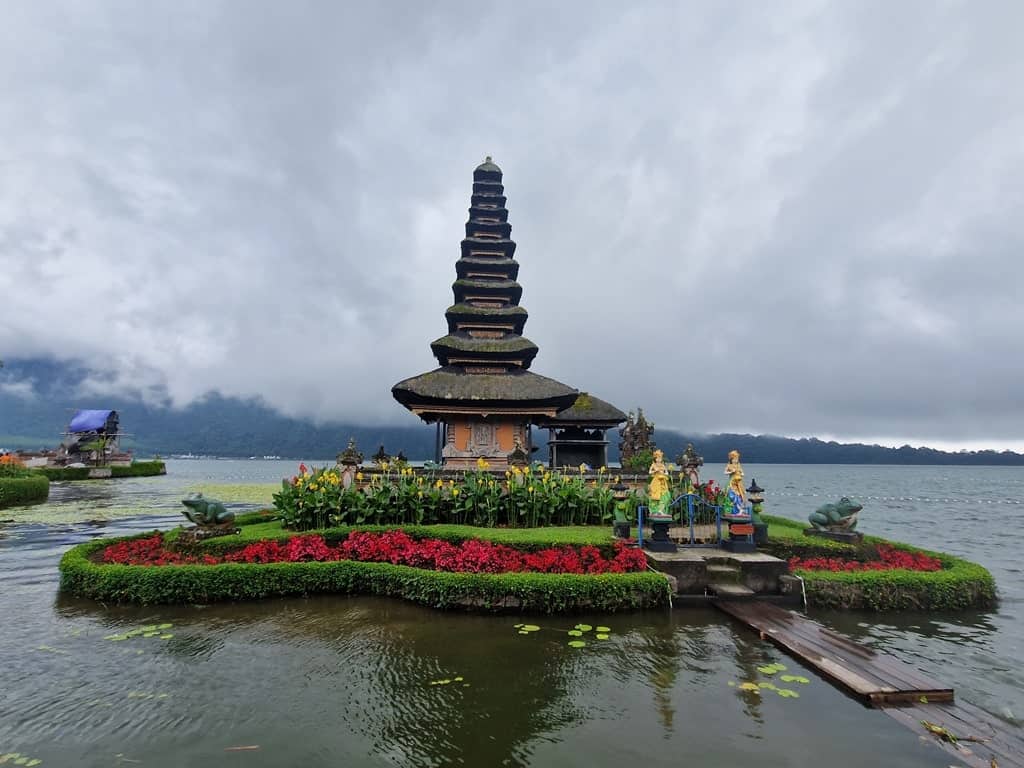
Situated on the shores of Lake Beratan, Pura Ulun Danu Beratan is arguably the most important water temple anywhere on the island. It forms part of the UNESCO listing for the subak irrigation system, playing a big role in water management to this day.
The main temple here, which dates back to around 1663, is dedicated to the Hindu goddess of water, Danu. There is evidence in the ancient monuments scattered around, however, that it may be much older (try thousands of years).
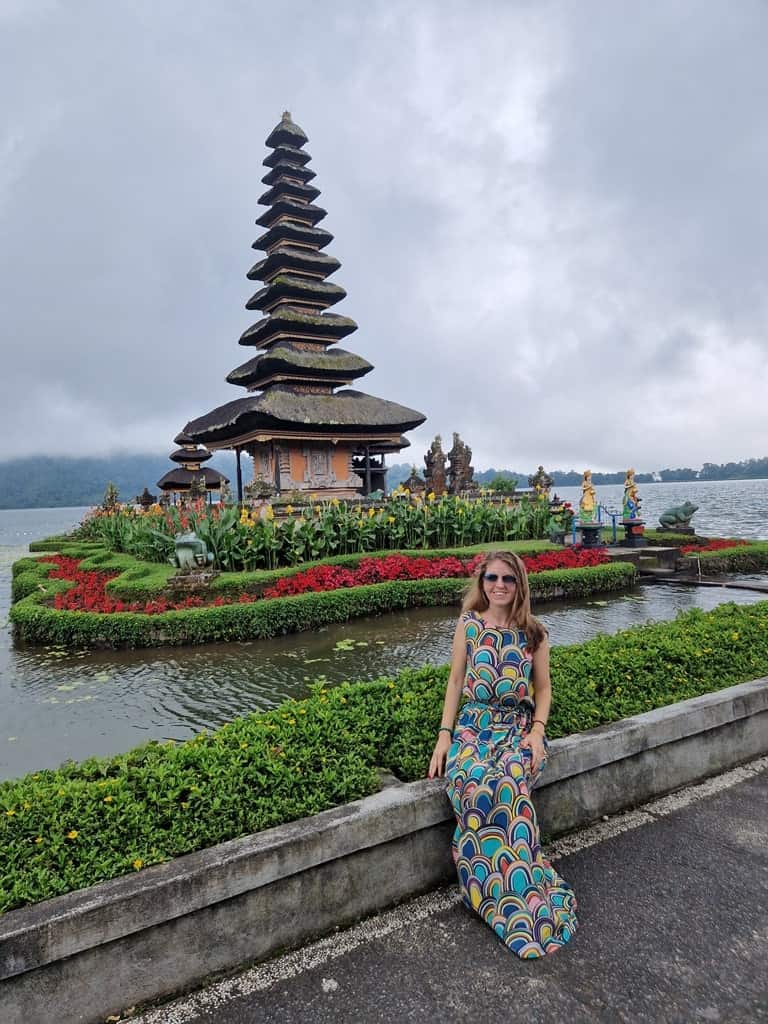
Locals come here to pray for fertility and abundant harvests, while priests and farmers take water from the lake and use it to sprinkle onto farmland. The famous 11-story meru (thatched pagoda) at Pura Ulun Danu Beratan is iconic, featuring on the 50,000 RP note.
Interested in visiting the Ulun Danu Beratan Temple on a guided tour? I recommend the following:
– North Bali: Sunrise Tour with Dolphins, Waterfalls & Temples
– Bali: UNESCO World Heritage Sites Small Group Tour
Pura Taman Ayun
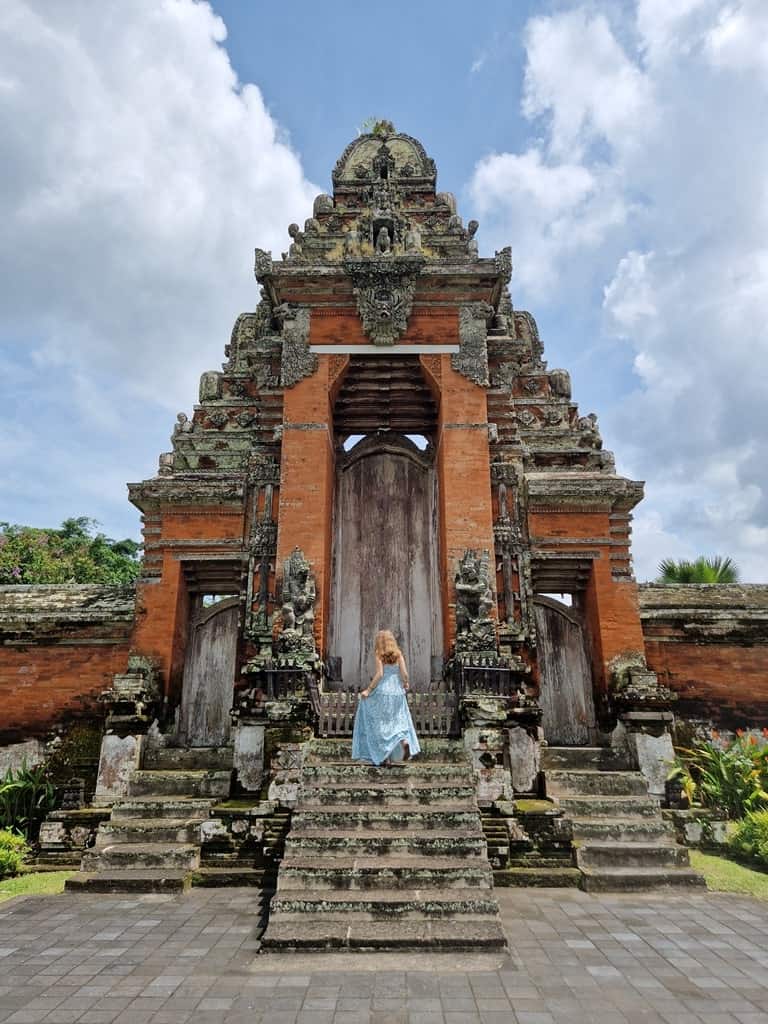
Translating to “Beautiful Garden”, this water temple is also part of the subak UNESCO listing. It was commissioned by a Balinese king in 1634 and is connected to the former Mengwi kingdom that emerged after the larger Balinese empire fell apart. Its aim was to pray for the general well-being of the Mengwi kingdom and its citizens (including protection and fertility).
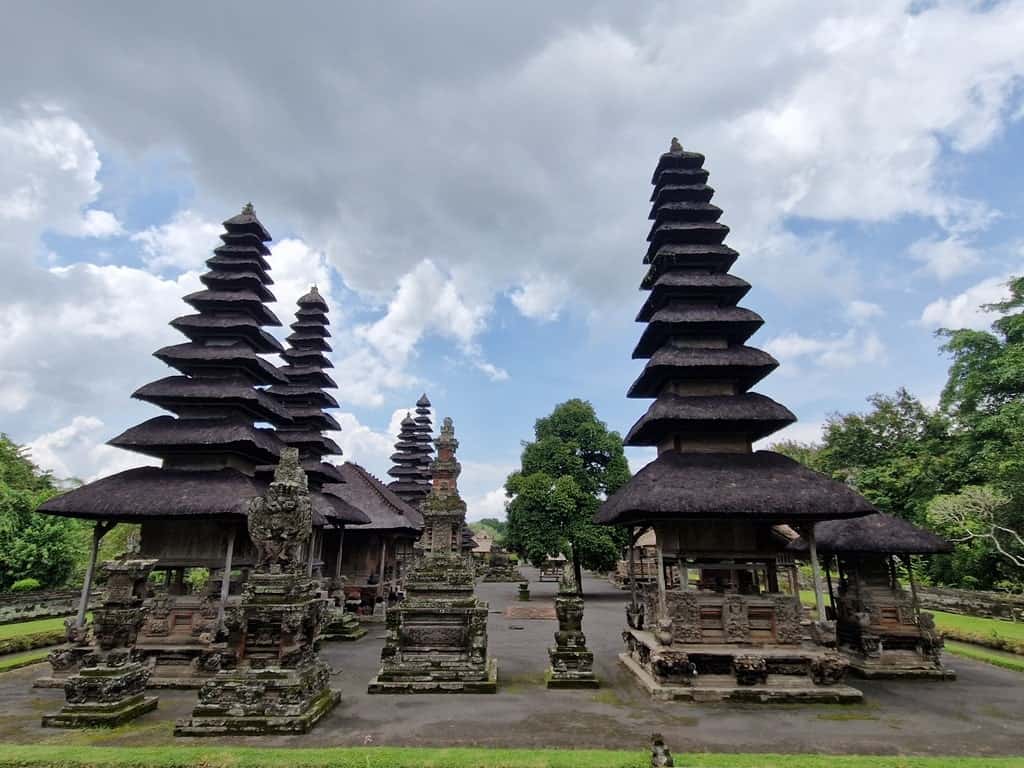
The temple was badly damaged in the 1971 earthquake, but restoration work carried out at the complex has brought it back to life. Here visitors can still explore its various courtyards, which boast carefully sculpted waterways, pools filled with lilies, and places to sit and soak up the serene landscape.
Pura Gunung Kawi Sebatu
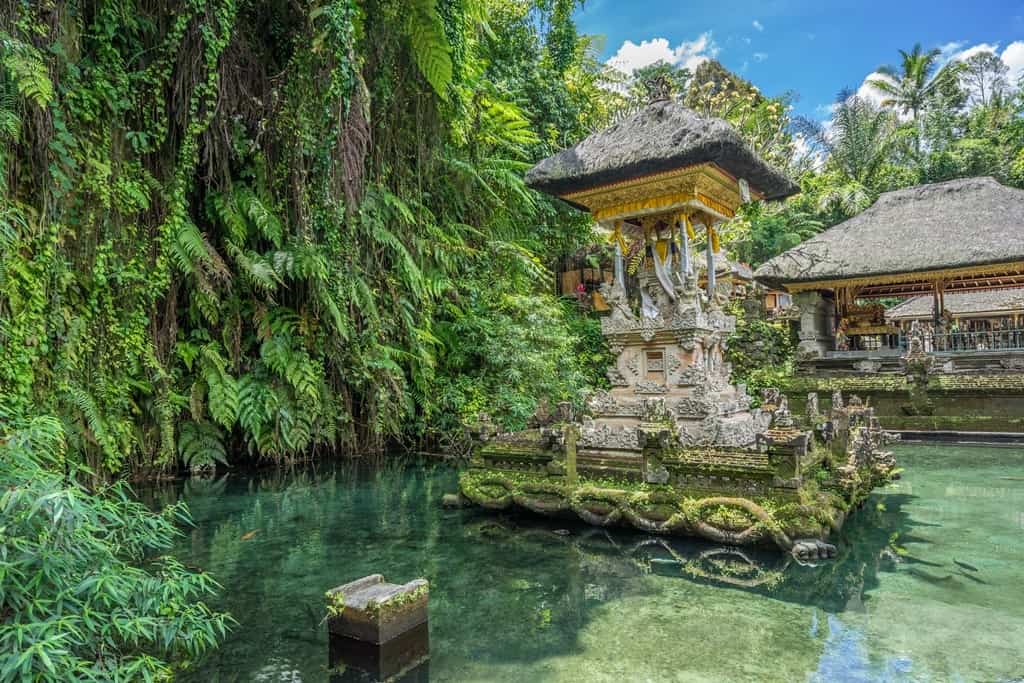
Also called Pura Tirta Dawa by locals, this 11th-century water temple is often overlooked by visitors to Bali. But it’s no less worth a visit than others. Here the temple grounds play host to a number of shrines, meru, and gushing water features.
The whole environment of Pura Gunung Kawi Sebatu feels lush and jungle-clad, making it seem like another world entirely. The bonus here is the option to bathe in two of the petirtaan pools here, each fed by five spouts of water.
As well as the pools themselves, ten rock-cut shrines can be seen here, ornately decorated and adding to the atmosphere of the location. All in all, as well as a slice of peace and quiet, it offers visitors a chance to cool down — or simply feed the fish.
Pura Taman Saraswati
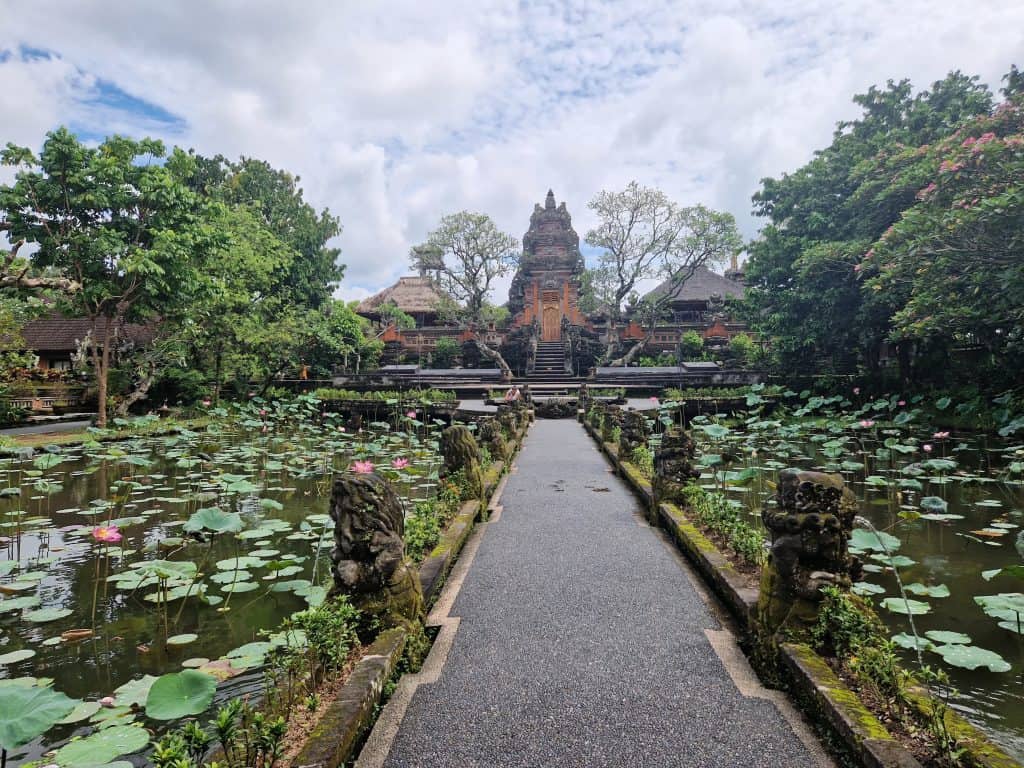
Pura Taman Saraswati is more commonly known as “Ubud Water Palace”, thanks to its location in Ubud. Built in 1951 and commissioned by a prince of Ubud, the temple grounds at Pura Taman Saraswati are dedicated to Saraswati, the Hindu goddess of knowledge, art, and wisdom.
The temple’s lotus ponds and elegant water gardens are edged by frangipani trees, creating an Eden-like backdrop for a stroll to discover the sculptures carefully placed throughout. Keep an eye out for the Padmasana Shine (Lotus Shrine), which is adorned with carvings of the cosmic tortoise, who holds up the world, and a number of nagas.
Tirta Gangga Water Palace
Though not strictly a water temple, the Tirta Gangga Water Palace still has a strong connection to the spiritual beliefs of Bali. Here you can enjoy wandering among several layers of well-tended gardens, complete with pools studded by stepping stones and fountains, as well as Hindu sculpture and lush plants.
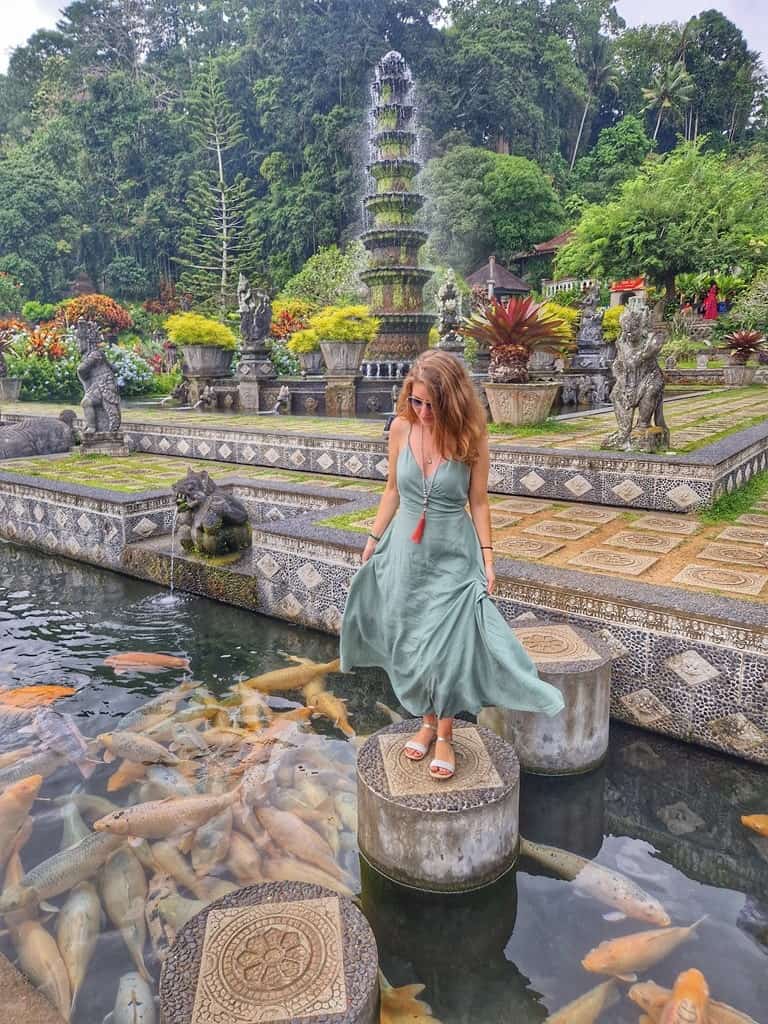
The garden was commissioned by a Balinese royal and created in the 1940s by local craftspeople, who took inspiration from Balinese palaces and temple architecture. The result is a peaceful oasis that’s like a capsule for Bali’s cultural heritage. There’s even a swimming pool here to take a dip in.
Interested in visiting the Tirta Gangga Water Palace on a guided tour? I recommend the following:
Bali: Full-Day Instagram Highlights Tour
Bali: Besakih Temple & Lempuyang Temple Gates of Heaven Tour
Practical Information on the Water Temples in Bali
How to get to the water temples in Bali
Bali’s water temples are scattered far and wide across the island and can be found in far-flung remote locations or close to towns. For those wishing to explore the temples, one option is to hire a car or a motorbike and make the journey around the island by yourself. Most of the temples have parking (for a small fee), and it means you won’t have to rely on anyone else to get you around.
Another option is to join a tour that will take you around a number of the most important water temples on the island. These sorts of tours will also take in other features of the subak irrigation system, such as the Tegalalang Rice Terrace.
What to wear to the water temples in Bali
Water temples are religious places, so making sure you’re dressed respectfully is a good idea. Choose clothing that covers your arms, particularly your shoulders, and your upper legs (and midriff too). Those who want to bathe in the temples can rent sarongs from the temple themselves before taking a dip in the pools. You may want to bring a towel or an extra change of clothes for this reason.
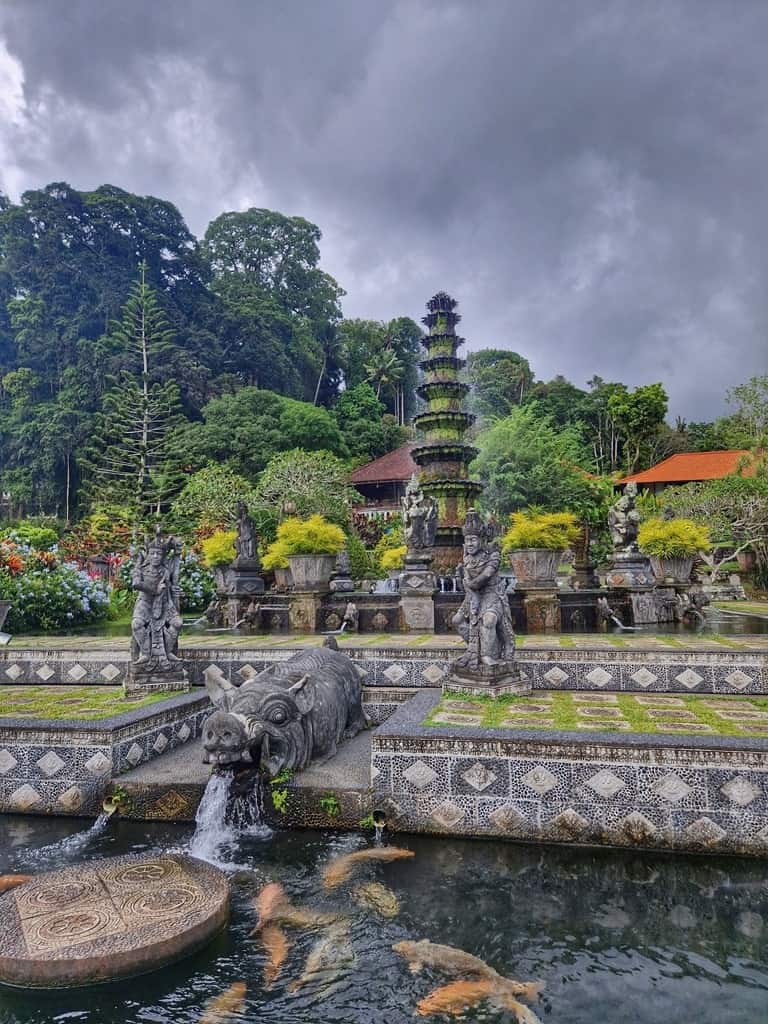
Can you bathe at the water temples in Bali?
Yes, it is possible for visitors to Bali to bathe in a handful of petritaan pools located at its water temples. However, not all temples may allow non-Balinese people to bathe in their waters, or certain pools may be restricted to purely religious use. Temples such as Pura Titra Empul and Pura Gunung Kawi Sebatu allow visitors to take part in the bathing ritual themselves. Note you’ll need to wear a designated sarong to do this, which is usually rented for a fee.
Do you have to pay to go to water temples in Bali?
Most Balinese water temples will charge a fee for visitors to enter the compound. This can range from a small donation paid for the parking, starting at around 5,000 RP (at the more off-the-beaten-track water temples) all the way to 50,000 RP at the more famous locations.
At some places there may be an extra fee if you want to take a dip in the pool, for example at Tirta Gangga Water Palace this costs 10,000 RP. To bathe in the sacred pools you may not be able to go in wearing a regular swimming costume, and therefore you may need to rent a sarong from the temple (this will cost around 5,000 RP).

